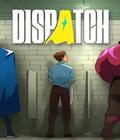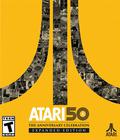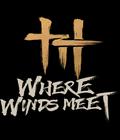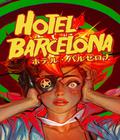Co-op shooters are hardly a new sight in video games, except when they are in VR. Vertigo Games' zombie shooter Arizona Sunshine has long been one of the preferred co-op VR shooters, so it makes sense that it would follow up with a title that firmly captures the VR niche. Almost unsurprisingly, After the Fall is another zombie shooter that takes a lot of inspiration from its flat-screen companions. It looks and plays like Left 4 Dead or Back 4 Blood, except that it was built for VR from the ground up. After the Fall released on Dec. 9 for all VR platforms, including PSVR and Quest 2. We've spent the better part of the last week playing the four-player co-op experience on Quest 2, both natively on the stand-alone headset and on PC via Steam, and we came away simultaneously impressed and slightly concerned.
I'll try to hold off on the L4D comparisons, but it's the best association since it executes the same formula: Four players, either human or bot, grab some guns and run through a mostly linear level to shoot zombies (Snowbreed) and harvest dropped currency while scavenging for items or collectibles to unlock weapon upgrades. AtF wraps the game into a slightly modified zombie scenario where the world is caught knee-deep in an ice age that also prompted the appearance of Snowbreed.
One of the few remaining survivors, you live in an abandoned subway station underneath 1980s Los Angeles. You only leave the safety of "The Line" for harvest runs in one of the five co-op maps that are available at launch. It's not wholly original, but adding an ice age and the '80s into the mix is an interesting idea. Alas, AtF does little with it in the story and visual style. Characters are well voiced, but the interactions are little more than some simple exposition via dialog. You do not choose your character skin in the game, but you'll always play as a random character on the team, which also has a few dialogue lines that are dropped during matches. It's better than silence when you're playing with bots, but even then, you'll likely hear the same repeated lines as soon as you're three matches deep.
In fairness, you're not playing AtF for the deep lore and storytelling but to shoot decaying humanoid monsters in the face. It does that very well.
You start the journey with a standard service weapon, which already packs a punch. At launch, there are six guns across the usual range of firearms: two types of handguns, an Uzi, two rifles, and a shotgun. The pickings are slim, but there's some great gameplay flexibility. You can carry four guns: two in the holster (or weapon wheel, if that's comfortable) and two in each hand. The best thing about this system isn't that you can quickly swap between guns or dual-wield different guns. The game doesn't require you to let go of the firearm you're holding if you want to grab anything, so you can grip a two-handed rifle while technically holding a gun in the other hand, or you can store an item (like a pipe bomb) in one of the two item slots.
Just like its available weapon arsenal, level selection can also feel limited. Each of the five stages available at launch might take 30-40 minutes on the first attempt, but it can be finished much quicker if you're gunning for a time bonus. While each stage takes place in a different part of L.A., the visuals can look very similar. Everything is drenched in gray snow and the dark, rotting remains of humanity. It doesn't matter if you're in Chinatown, an arcade, quarantine center, or in an office building; the visual style and atmosphere don't vary. In a game that is designed around repetition, some more visual variety would've been great between the five stages. When I try to recall them, they blend into one another, with no clear favorite among them.
Levels are built well for VR, with lots of interactions and weapons that simulate a realistic amount of weight. There are some rare levers to activate and zip lines to zip down, but the medium should've allowed the developers to get more creative. You're able to throw weapons and items to your teammates if needed, but the necessity is pretty limited. VR-wise, I like the shooting range the most because you can physically dismantle and reassemble weapons with earned attachments. It's a solid addition, but I have seen better implementations of similar systems in other games.
Each level follows roughly the same setup with some minor variations. Run into a new area, kill everything that moves, look out for collectibles, and carry on. There are two to three safe rooms per level that can be used to buy items and heal. Even though it's a zombie shooter, AtF isn't necessarily a survival shooter. Ammunition is usually nearby when you need it, with boxes that can be shot from afar to replenish ammo. You don't want to get caught without ammo in a group of Snowbreed, so your survival depends on opening the boxes regularly.
There's some variety to the zombies, but it feels fairly limited at this stage. Regular zombies come in slow and fast variants, each with optional ice shielding on certain body parts. Special Snowbreeds are thrown into the mix but don't deviate far from the genre norm: Big "Boomers" that explode, Juggernauts that are tanks that one-shot anyone they can grab, a charging heavy-armored zombie, and a towering zombie with multiple hit zones. The latter boss variant is used in almost every level as the final encounter, and that quickly gets old.
Compared to other shooters of its kind, AtF does a decent job of alternating and randomizing spawn points and intensity, and that can keep things interesting for a while. Progression is not very pronounced yet. There are floppy discs hidden throughout each area, and based on the difficulty level, they reward you with rarer weapon attachments. On top of that, if you win a match, you get to keep all items on your body, including found weapons. This is neat but further devalues the need to earn currency, since you already earn more currency than you're able to spend.
AtF is fun and satisfying to play. The gunplay is excellent, and shooting zombies with a couple of friends feels great, but I'm concerned about longevity. While the earned weapon upgrades make a tangible difference in damage output and handling, it's currently the only real progression system. Levels often have a hidden room that can be accessed with a key card, but since these only offer a few items and weapons (which can be collected in a few matches anyway), they quickly lose their appeal. As such, the limited selection of weapons, enemy types, and levels on top of its inherent design to repeatedly play through levels on varying difficulties may not hold everyone's attention for long. We know that AtF will receive future updates, the first of which will be free (and add at least a new gun, game mode, and a new co-Op and PvP map each), but we don't know if the same will be true for future updates.
Of note: We have not played the two PvP maps yet due to the lack of available players and willingness to play the mode before launch. From what we've seen, it looks to be a minor but appreciated addition for variety's sake.
In addition to its gameplay, the biggest positive for AtF is the cohesive online play. Players are dropped into in a big underground lobby with arcade machines. You can walk up to someone to invite them to your party, or you can go to the social tools and invite anyone who's in the lobby. You could also start a game from an arcade machine to match-make with other players. It provides many options to easily connect with unknown players. If I had to nitpick, I'm annoyed that the game offers a voting period of 30 seconds after each game to choose what players want to do next — and it doesn't skip the wait time even when everyone has voted. Prepare to stand around with strangers in a dark virtual room.
Since there's cross-play between all platforms, I'm not concerned about the player count yet. If AtF manages to keep good and affordable content coming, it should fare fine due to a larger cross-play player base. It also wouldn't be the first VR multiplayer title to see a user decline within its first year, so it's good to keep that in mind. If you get a party of four people together, things are usually a ton of fun, and the game provides room for conversations and exploration in all of its stages, so there's a good flow between stressful challenges and friendly banter during brief downtimes.
If you're playing with bots, the experience is bland in comparison. I played a ton of matches with bots and was frustrated throughout due to the limited abilities of the AI companions. Playing with bots can be a coin toss as to whether you can keep them out of trouble or they can revive you. AtF is a solid co-op shooter that provides a good base that Vertigo can build on, even though the content is slim right now.
The game is plagued with a few bugs that repeatedly get in the way. Anything that involves grabbing is inconsistent at best. Grabbing a magazine from your pouch and reloading can lead to inadvertently dropping the mag or grabbing something else. You get used to it and find ways to work around it, but it never feels natural. Grabbing things off the ground or from drawers is worse. Sometimes, items fall through surfaces or refuse to be picked up altogether. Once, I wanted to put an item in an item slot, which caused items in the other slots to randomly swap to my hands. It took a full reload to resolve this. It has not happened since, but it's very inconsistent at the moment and can cost your virtual life.
What's worse is the collision detection with your head. If your head ends up in the scenery, the screen goes black and freezes you in place, which is highly disruptive. Movement out of the wall is only possible by physically moving your head out of the obstacle, but that can be finicky at best and deadly disorienting at worst. For these issues alone, I'd recommend waiting for a few patches before jumping in.
On the positive side, AtF is very approachable as a VR title, as it supports a variety of play styles and comfort options: seating or standing, smooth motion or teleportation, realistic weapon reloads or one-touch reloads. There are settings for pretty much anything you need to customize. None of the options limit the way you play the game, except if you chose realistic reloading, which grants 50% bonus currency for missions due to the added difficulty of physically reloading. I enjoy the manual reloading for immersion, but I can see turning off the feature in higher difficulty levels. There isn't much to buy with the currency you earn right now — and you do earn a lot of it — making the 50% extra payout less appealing than saving a few seconds when you're reloading in a tough spot. It's great to have the choice, and I'm sure almost everyone can find a comfortable way to play in some capacity.
We've extensively played both the PC and Quest 2 versions, and both of them hold up well. It's not surprising that AtF on the PC looks leagues ahead of the Quest 2 version, but the stand-alone port can competently stand its ground. On the PC, the game looks beautiful at times, but some muddy and low-resolution textures pop up. Otherwise, the enemies and environments have a good amount of detail and set dressing to sell the dark, flashlight-lit atmosphere of the postapocalyptic landscape. On an RTX 3070 and 5600x, I was able to get around 80-90fps, which ran good enough on my Quest without noticeable hitches but not as good as I'd hoped from a PCVR title. Upping the frame rate, even on lower settings, introduced significant stutters and noticeable frame variation. If you value graphical fidelity above all else, this is the version to get. At the same time, I've been enjoying my time with the native Quest 2 version just as much, and I freely switch between the two without any issues. Be aware that there is no cross-progression between platforms, even though there is cross-play (and cross-buy, meaning you get both the Quest and PC versions if you buy the game on the Oculus Store).
There are leagues between both the PC and Quest versions, but Vertigo has made smart concessions, so if you have a Quest 2, AtF is just as worth getting as the PC version — and you technically get both with a purchase. The Quest 2 runs at a lower resolution but still looks sharp in the headset and removes visual details and features to ensure the gameplay is virtually the same as all other versions. Flashlights and shadows have been removed, and the game is brighter to ensure visibility. Textures are simpler, and the game looks more like a comic rendition of its PC counterpart due to the reduced level of detail. The look fits the game well, and I enjoyed the overall gameplay, which remains intact on the Quest 2. Optimizing for the Quest 2 is no easy feat, and there are many changes to boost performance. On the PC, interacting with buttons is possible with whatever you are holding in your hand, like the tip or side of your gun. On the Quest 2, the specific physical interactions are removed, and your hand is shown pressing the button.
I thoroughly enjoyed After the Fall for what it is: a VR Left 4 Dead clone with satisfying gameplay and some cool social VR settings that lay a solid foundation for the future. However, we don't know what that future looks like yet since we don't know how much content Vertigo will release in the coming years — and at what price. The included content is the bare minimum, and the game has a few issues to iron out before I can recommend it. That said, if you've been itching for co-op fun with some friends in VR regardless of the platform, AtF is a good choice if you can see pasts its numerous minor shortcomings at launch.
Score: 7.0/10
More articles about After the Fall











 After the Fall is an epic multiplayer VR action FPS that will bring players into a vast, hostile world with seamless co-op gameplay at its core.
After the Fall is an epic multiplayer VR action FPS that will bring players into a vast, hostile world with seamless co-op gameplay at its core.




































